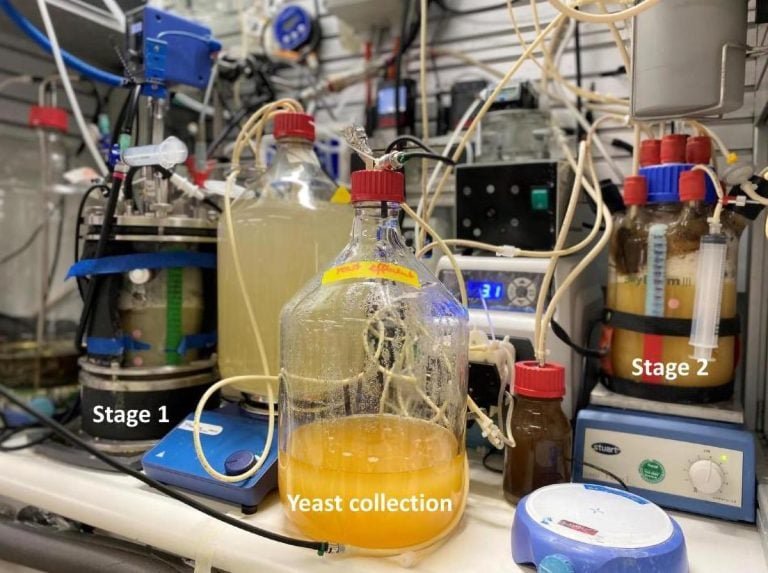In a groundbreaking breakthrough, German researchers have developed a sustainable method to produce protein and vitamin B9 from microbes using renewable energy. This innovative technology has the potential to address global food challenges, reduce carbon emissions, and provide a nutrient-rich food source.
How it Works
The process involves a two-stage bioreactor system that utilizes yeast to produce protein and vitamin B9. The system runs on renewable energy and uses:
- Hydrogen and oxygen produced from water using clean energy sources.
- CO2 converted into acetate by bacteria.
- Acetate-fed yeast producing protein and vitamin B9.
Benefits
- Sustainable food production: No farmland required.
- Reduced carbon emissions: Clean energy and CO2 utilization.
- Increased food security: Reliable protein source.
- Improved public health: Vitamin B9 enrichment.
- Environmental conservation: Land preservation.
Nutritional Value
The harvested yeast:
- Exceeds protein levels in beef, pork, fish, and lentils.
- Meets daily vitamin B9 requirements with just 6 grams.
- Comparable nutritional value to conventional foods.
Future Directions
The research team plans to:
- Optimize and scale up production.
- Investigate food safety.
- Conduct technical and economic analyses.
- Gauge market interest.
A New Era in Food Production?
This technology has the potential to transform the food industry, providing a sustainable, vegan, and non-GMO protein source. As the global population approaches 10 billion, this innovation couldn’t come at a better time.
Reference
“Trends in Biotechnology” journal, Cell Press.
Key Takeaways
- Sustainable protein production from air and water.
- Vitamin B9 enrichment through yeast fermentation.
- Reduced carbon emissions and land use.
- Potential solution for global food challenges.
Stay Updated
Follow us for more insights into groundbreaking research and innovative technologies shaping the future of food production and sustainability.

















